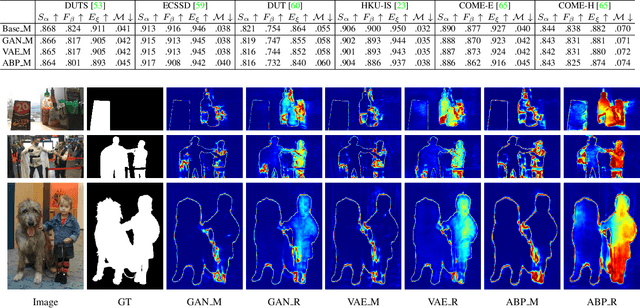A General Divergence Modeling Strategy for Salient Object Detection
Paper and Code
Nov 23, 2021



Salient object detection is subjective in nature, which implies that multiple estimations should be related to the same input image. Most existing salient object detection models are deterministic following a point to point estimation learning pipeline, making them incapable to estimate the predictive distribution. Although latent variable model based stochastic prediction network exists to model the prediction variants, the latent space based on the single clean saliency annotation is less reliable in exploring the subjective nature of saliency, leading to less effective saliency "divergence modeling". Given multiple saliency annotations, we introduce a general divergence modeling strategy via random sampling, and apply our strategy to an ensemble based framework and three latent variable model based solutions. Experimental results indicate that our general divergence modeling strategy works superiorly in exploring the subjective nature of saliency.
 Add to Chrome
Add to Chrome Add to Firefox
Add to Firefox Add to Edge
Add to Edge